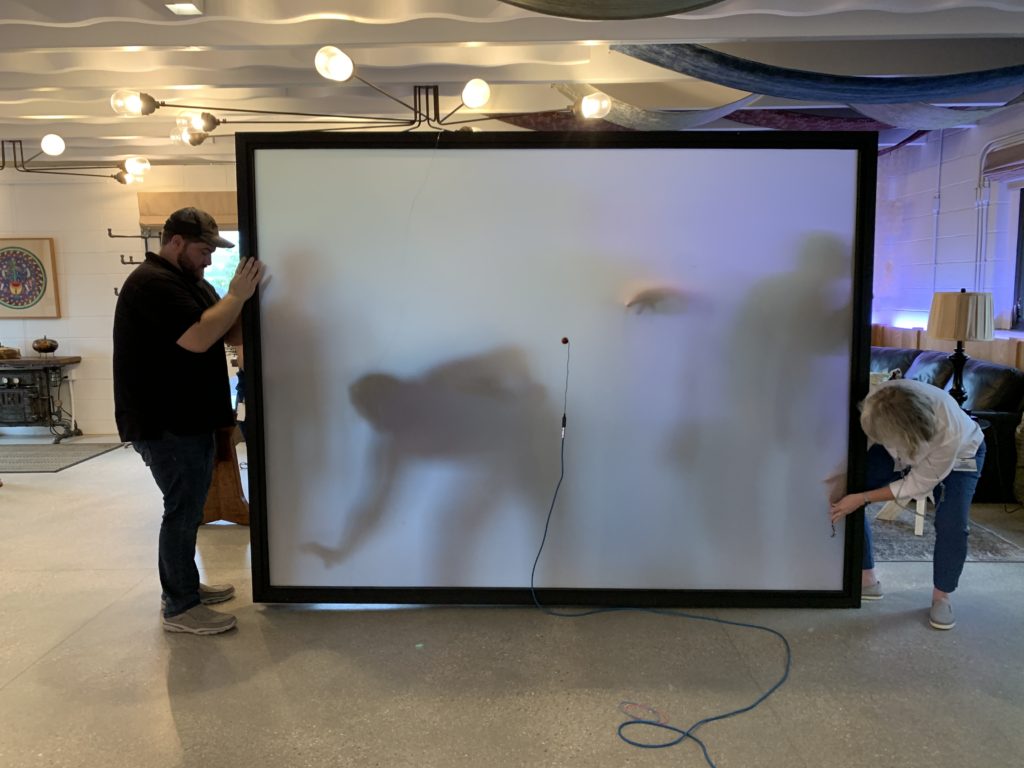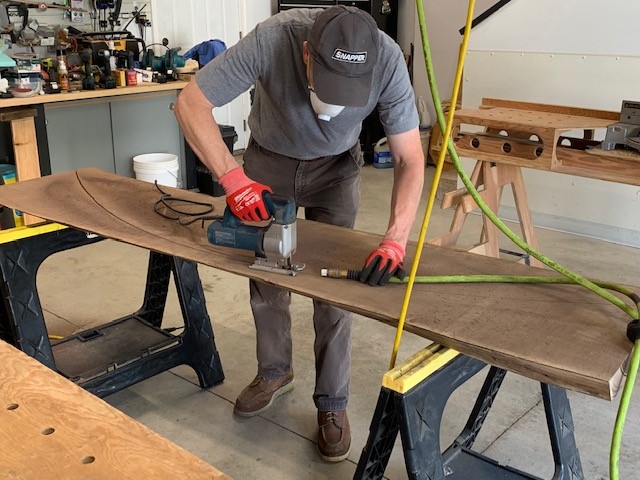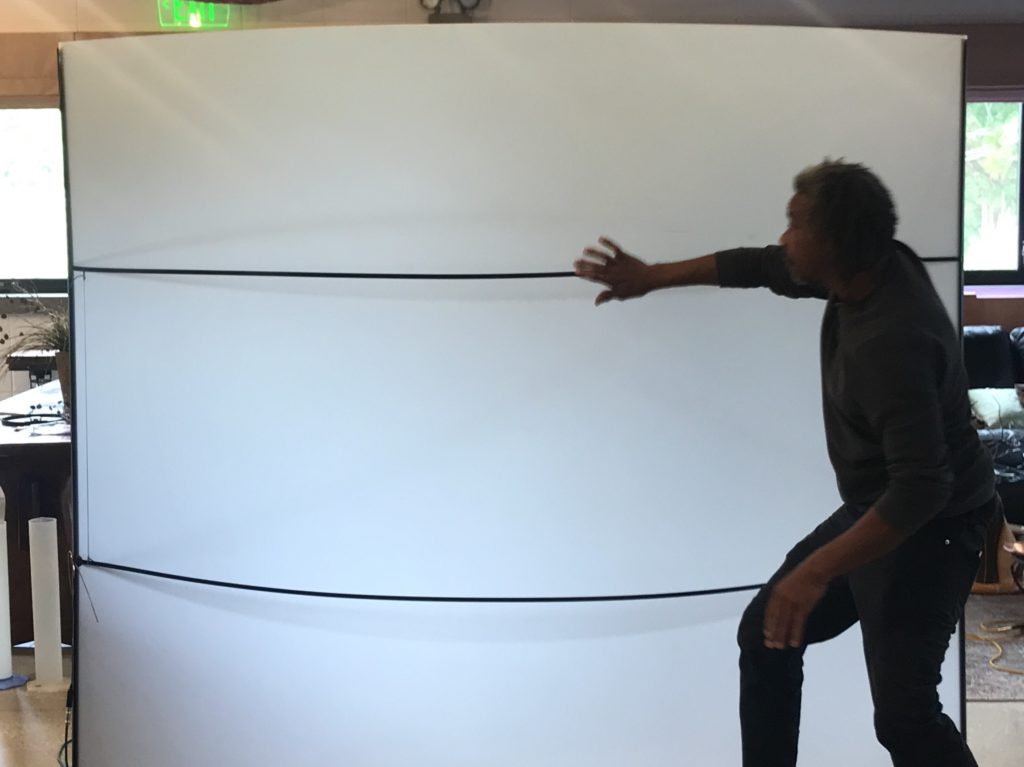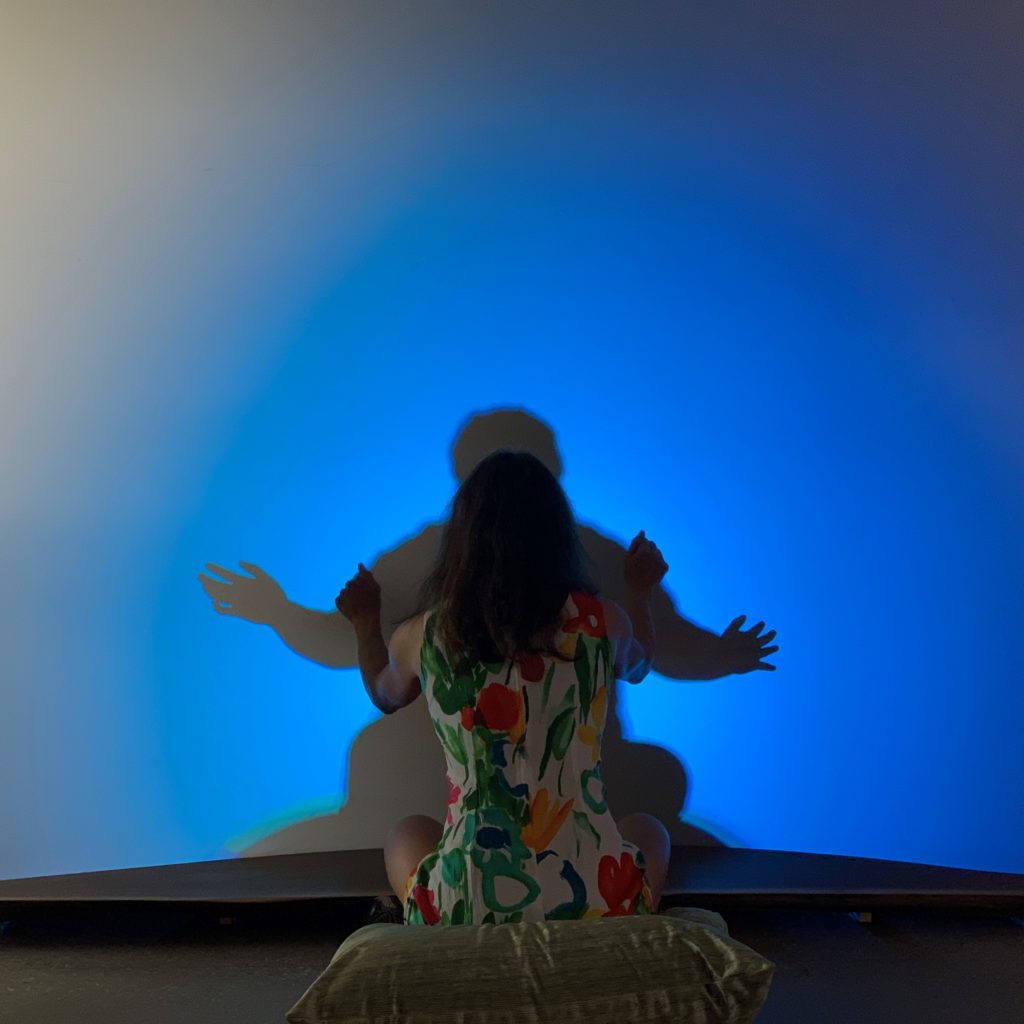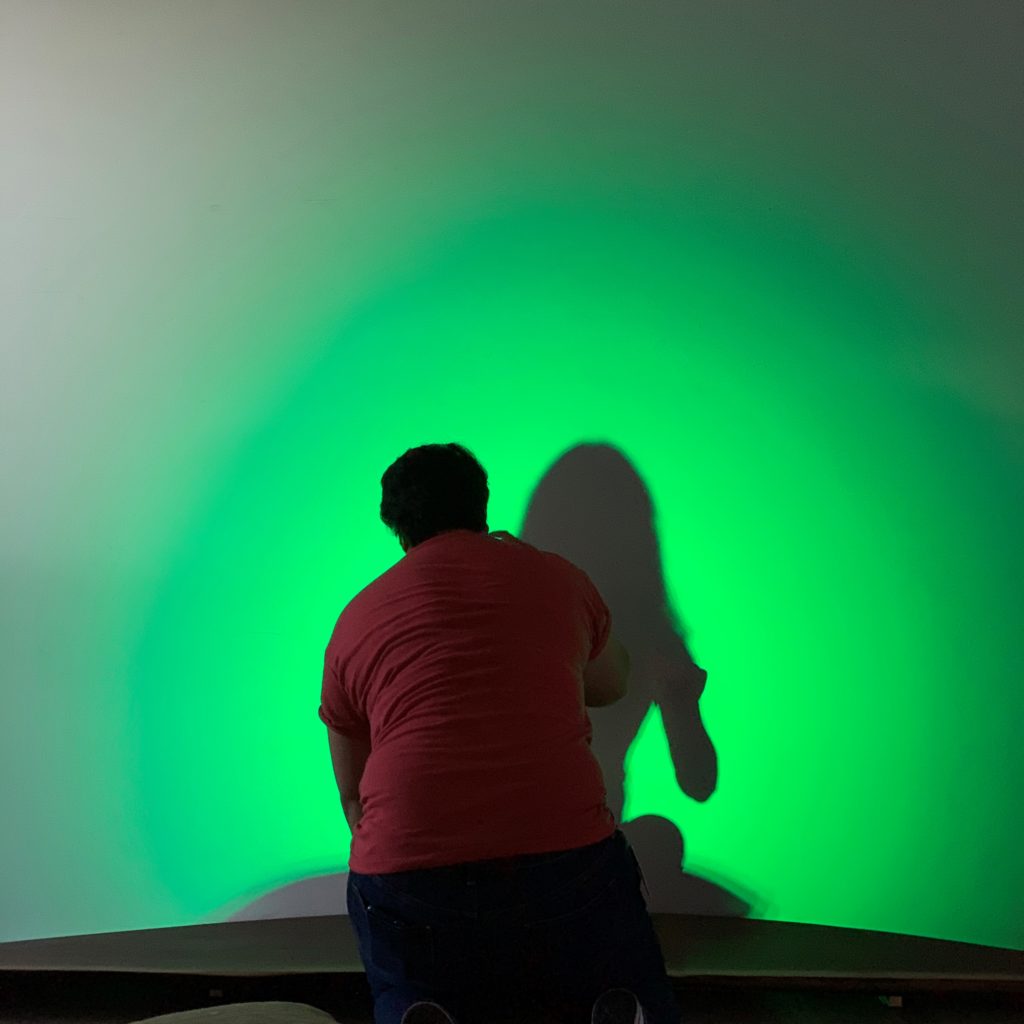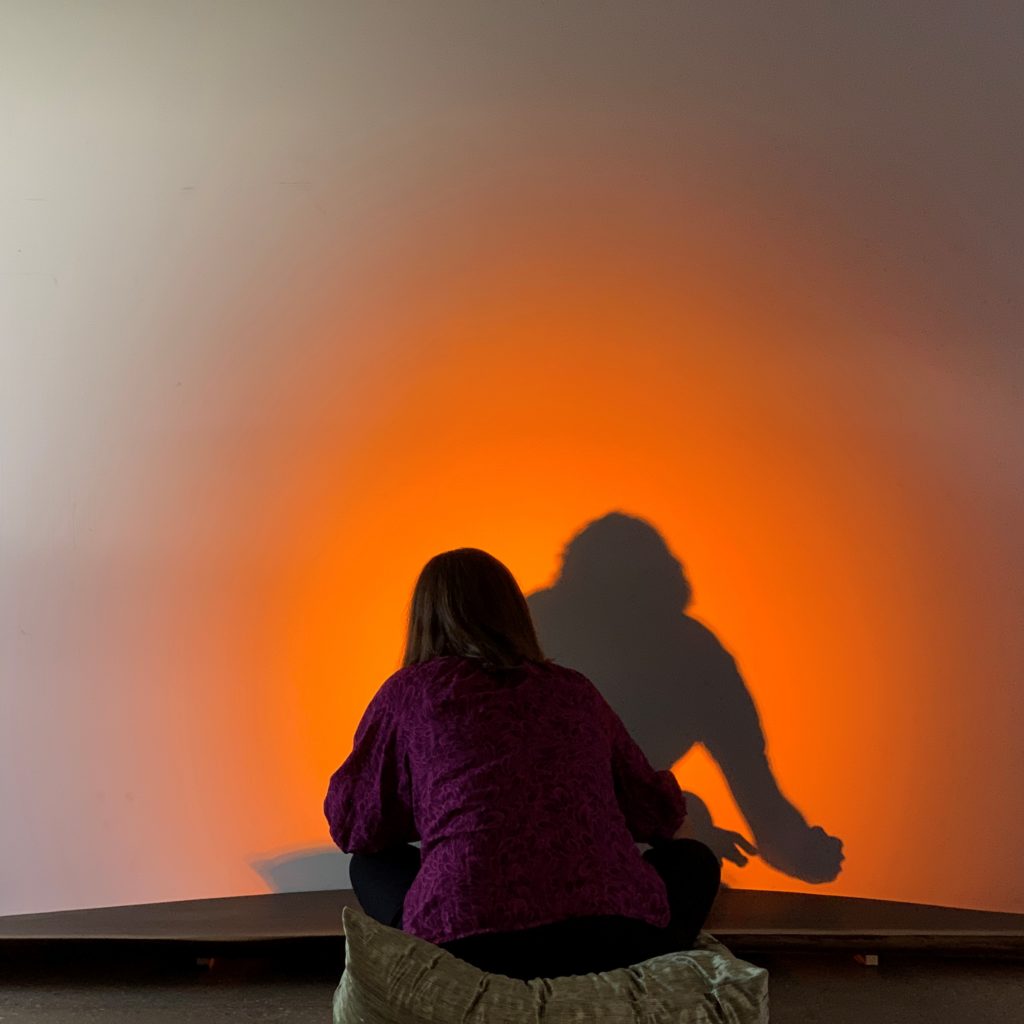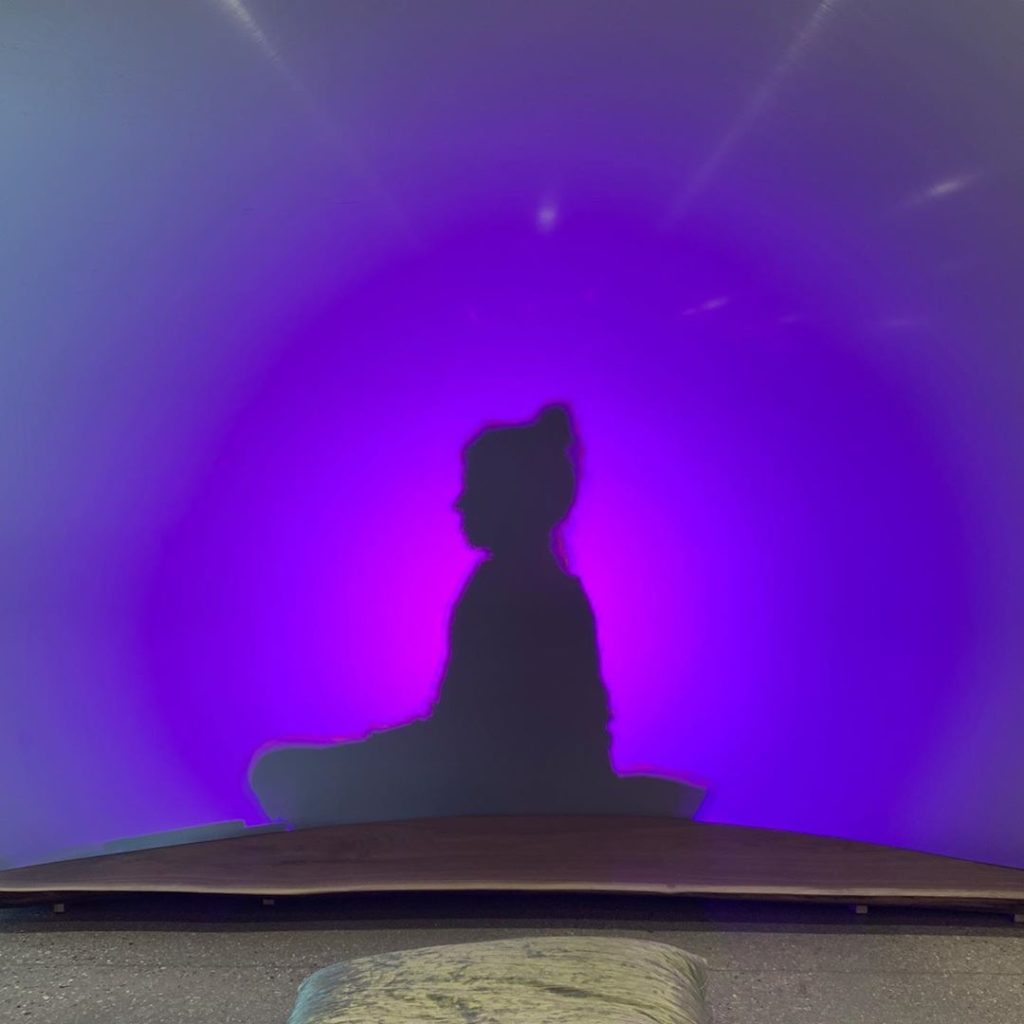
Joe Willie Smith has always been a creator. As a young child growing up in Milwaukee, his mother encouraged him to make art and find beauty in the everyday. Following years of work in printing and graphic design (including posters for Gil-Scott Heron and Chaka Khan), Smith began channeling his inspiration and creativity into building playable “sonic sculptures” out of found objects. “They’re not all considered instruments…sometimes I just make soundscapes out of them,” Smith says.
As the artist-in-residence for the Promega Fall Art Showcase, Smith set out to create a sonic sculpture from collected items from the Promega campus. He planned to perform on the instrument at the opening of the Art Show, but his creative process led to something much more—a collaborative experience in sound and color.
Throughout his residency, Promega employees and members of the community were invited to drop in to the studio to observe, donate a found item or lend a helping hand. Smith experimented with several found items—including labware—by attaching piezo microphones (small microphones that detect sonic vibrations from solid objects) to amplify sound. “Most microphones have to be powered, and these don’t. You can attach them to just about anything and get a sound,” he says.
Out of all the items donated, there was one object that provided Smith with the most inspiration—the old projection screen from the auditorium. Originally, the screen was attached to a metal wire frame, but as Smith and others played around with tapping and beating on the screen, he realized that the metal frame was inhibiting the vibrations of the screen to create the sound he wanted. For his vision to work, the screen needed to stand on its own.
“It started out as a sonnet, but ended up as haiku.”
Smith took a beautiful piece of walnut wood harvested from one of the trees on the Promega campus, and with help from Eric Teigen, Project Coordinator in Promega’s Distribution Services department, they created a solid base to hold the screen upright with an inviting minimalist curve. “I like the fact that it doesn’t really look like a musical instrument…you’re not intimidated by saying ‘oh, I don’t know how to play drums,’ you’re just banging on a piece of wood and scratching on a piece of plastic.”
There is a color projector set up behind the screen. Originally, Smith intended on projecting images of the ocean to evoke a response from the viewer. However, he noticed that his chosen images looked more like a swath of color. He said, “That’s when I realized a color field would work better…so it wasn’t me choosing the image anymore…it reveals more about you than it does about me.”
The instrument is designed for two participants. On the back side, the player sits in front of the projector so their shadow is visible on the front side. The participant in the front gets to select which color is projected on the screen, meant to reflect that person’s psychological state. The players then collaborate with one another by creating rhythmic sounds, amplified by two piezo microphones near the base of the screen. The wooden base creates more traditional percussive tones, while the plastic screen can be slapped and scratched to create more accented ethereal sounds.
Smith encourages participants to take turns experiencing each side of the instrument. “It’s a duality,” he says. “On this side, you’re reacting to your own psychological state…on the other side, you’re alone.”
Eventually, he’d love to see this piece have more of a neuroscience element to it. “I would love to see electrodes that would be placed on the head, so instead of the participant choosing the color, there’s a transition of color based on the mental state of the participant.”
Smith finds great beauty in the collaborative and experimental process that led to the development of this instrument. “It started out as a sonnet, but ended up as haiku,” he says.
You can find Joe Willie Smith’s art along with other exhibitors at the Promega Fall Art Showcase on display now through the end of the year.
Related Posts
Latest posts by Mariel Mohns (see all)
- Sustainability Makeover: Parking Ramp Edition - January 27, 2020
- Go with Your Gut: Understanding How the Microbiome and Diet Influence Health - November 26, 2019
- Celebrating and Supporting Women in STEM for Science-a-thon - October 25, 2019
